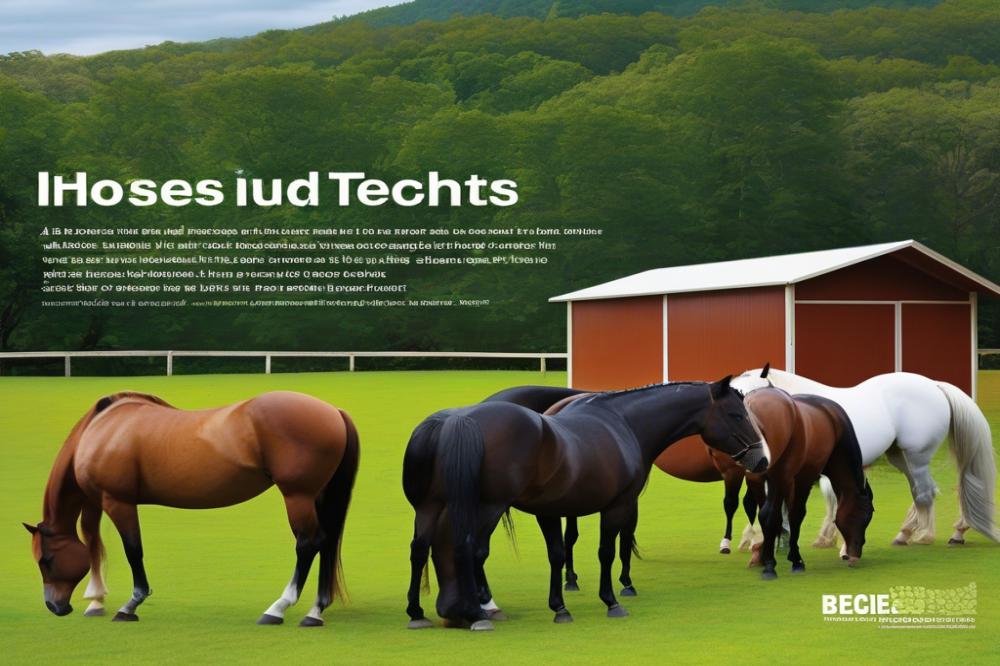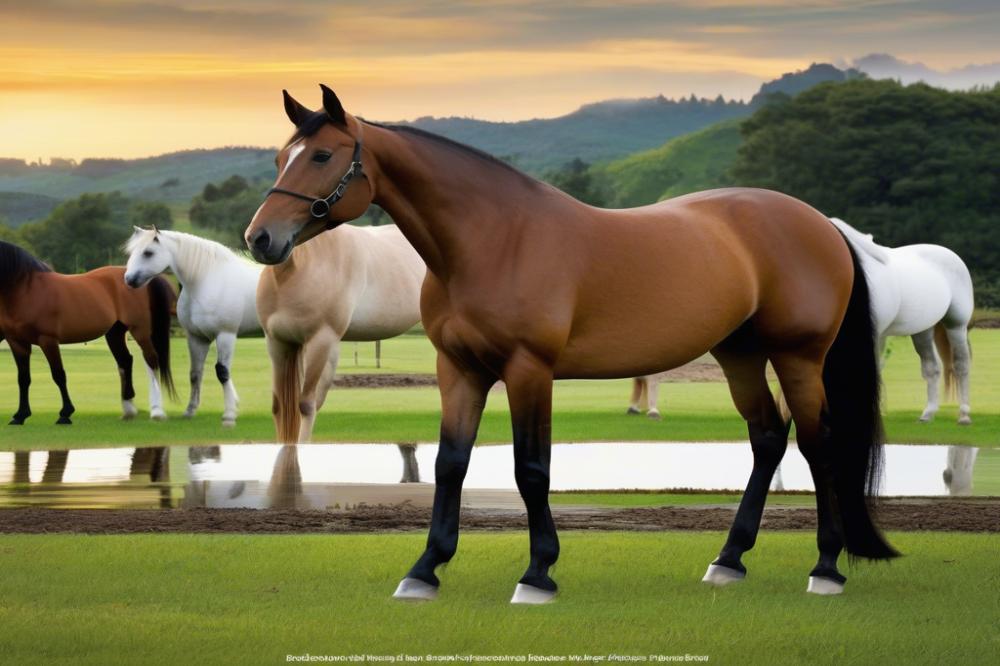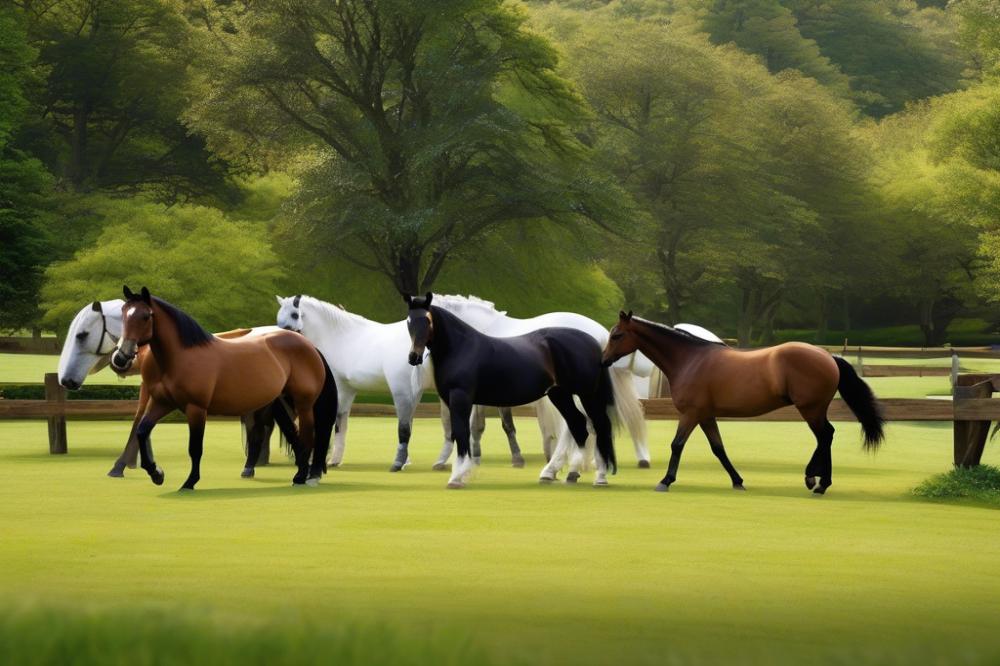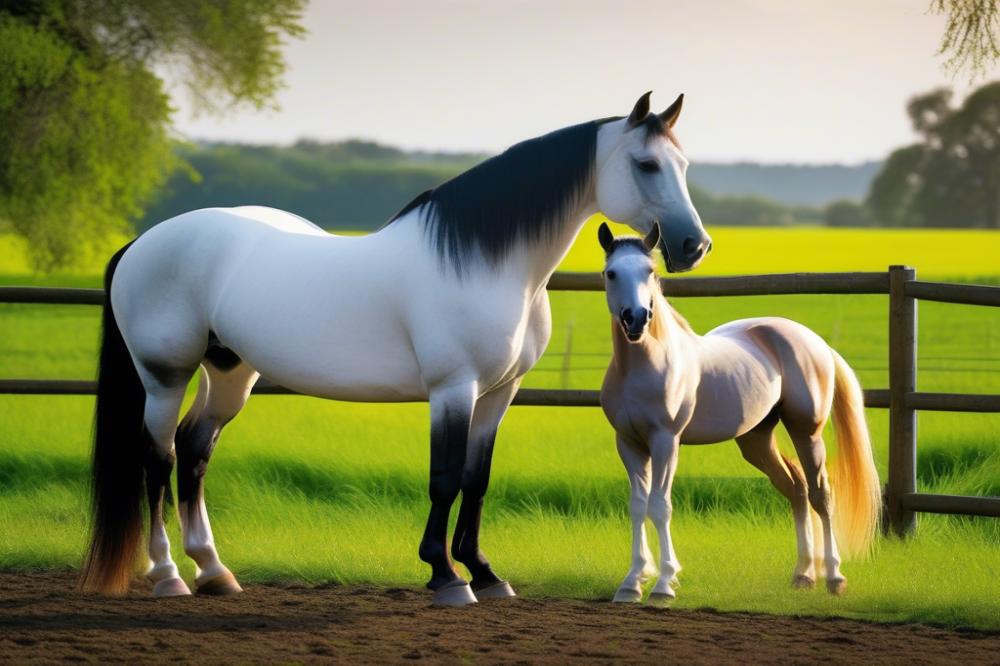The Science of horse breeding Techniques and Innovations
Throughout history, the art and science of horse breeding have evolved significantly. Breeders have meticulously refined their methods to enhance the qualities of these majestic animals. Traditional practices combined with modern innovations pave the way for a new era in equine reproduction. Each choice made during this process can influence a horse’s physical attributes, temperament, and performance abilities.
This field has recently witnessed groundbreaking advancements that incorporate genetic insights and reproductive technologies. One prevalent method involves artificial insemination, allowing breeders to utilize superior genetics without the need for physical proximity. Such practices help expand genetic diversity, ensuring healthier and more resilient offspring. The role of technology does not stop there; techniques such as embryo transfer also come into play, enabling the production of multiple foals from a single mare.
Moreover, the integration of genetic testing has taken horse breeding to unprecedented levels. Knowing the genetic background of a prospective breeding pair can significantly inform crucial decisions. Data-driven approaches allow breeders to anticipate potential health issues or performance attributes before a foal is even conceived. This analytical lens increases the chances of producing exceptional horses that meet the diverse needs in various equestrian disciplines.
The continuous quest for improvement in breeding techniques pushes boundaries further. It is a complex journey, characterized by an intricate balance between long-standing traditions and emerging technologies. As breeders engage with innovations, they must remain grounded in the fundamental principles of equine biology and welfare. Insights from veterinary research also play a vital role, contributing to informed decisions regarding the overall health of both mares and their foals.
Ultimately, the science of breeding horses bridges passion and logic. Whether through the careful selection of bloodlines or the implementation of cutting-edge reproductive processes, the objective remains the same: to nurture the next generation of equine athletes, companions, or working partners. With each advancement, the horizon broadens for those dedicated to crafting the future of these noble creatures. For more on the nuances and intricacies behind horse breeding, you can explore this comprehensive guide on horse breeding.
Engagement with the community and ongoing education also plays a pivotal role in this industry. Breeders must remain adaptable, learning about new findings and refining their protocols. The knowledge exchange among equine enthusiasts fosters an environment where innovation can thrive. In the end, successful breeding not only reflects individual skill but also embodies the collaborative spirit that exists within the equestrian world. For detailed insights on effective breeding techniques, further exploration is invaluable.
The Science of Horse Breeding Techniques

Definition of Horse Breeding
Horse breeding is the art and science of mating selected animals to produce specific qualities and characteristics. Think of it as matchmaking on four legs. Breeders study conformation, temperament, and performance to choose ideal pairs, all with the hope of producing foals that excel in their intended disciplines. It’s not just about making horses; it’s about crafting the next generation of athletes and companions.
The Role of genetics in Horse Breeding
Genetics plays a pivotal role in determining the traits passed from parents to offspring. Each horse’s DNA is a puzzle, where every piece contributes to the overall picture. Some traits are dominant, while others are recessive, creating a complex tapestry of potential. Breeders must decipher which genetic combinations will yield desirable outcomes, navigating a labyrinth of possibilities. With modern tools, understanding these genetic blueprints has never been clearer, guiding decisions that could influence a horse’s career.
Understanding Bloodlines and Their Significance
Bloodlines often tell a story. They reflect generations of breeding choices, each with a history of accomplishments and failures. In the equine world, having a respected lineage can open doors. Breeders spend countless hours tracing ancestry, revealing patterns in performance and disposition. Certain bloodlines are renowned for speed, while others shine in temperament or stamina. This connection to heritage isn’t just a bragging point; it underpins strategic decisions that can make or break a breeding program.
Overview of Equine Reproduction Processes
Equine reproduction is a fascinating, albeit intricate process. Foaling usually occurs after an 11-month gestation period. The mechanics of conception involve careful timing. A mare’s heat cycle, or estrus, lasts about 21 days, and understanding this rhythm is crucial for successful breeding. When breeding takes place, either naturally or via artificial insemination, a horse’s reproductive systems engage in a delicate dance. It’s essential to monitor hormone levels and physical signs, as precision can dramatically influence the odds of conception.
Various methods, including ultrasound and other technologies, help assure that everything is progressing as it should. When foals finally arrive, they bring with them an air of optimism and the promise of their future. Breeders eagerly await each new life, hopeful for a champion or a beloved companion.
Innovative Breeding Techniques

Artificial Insemination: Methods and Advantages
Artificial insemination has transformed the way we approach equine reproduction. By utilizing this method, breeders can find the right stallion for their mare without the need for direct contact. Semen collection and preservation techniques, such as refrigeration and freezing, allow for prolonged storage. This means a mare can benefit from elite genetics from across the globe. The logistics are simpler too; it’s much easier to ship semen than to transport a horse. Moreover, the risk of transmitting diseases is significantly reduced, creating a safer breeding environment for horses.
Embryo Transfer: Technology and Applications
Embryo transfer has taken the concept of reproduction into a new realm of possibilities. This technique allows a mare to carry a foal that is not genetically her own. Instead, one mare, often referred to as the donor, provides oocytes that are fertilized and then implanted into a surrogate mare. The primary advantage is that it enables the production of multiple offspring from a single high-quality mare in a single breeding season. This method opens a Pandora’s box of genetic potential, giving breeders access to superior bloodlines without overburdening any single mare.
Genetic Testing: How it Impacts Breeding Decisions
In recent years, genetic testing has become a game-changer in the breeding landscape. This technique provides detailed insights into a horse’s lineage, health, and potential performance traits. By understanding genetic predispositions, breeders can make informed decisions that enhance their chances of success. It can feel a bit like a double-edged sword; while the insights can guide breeding choices, they also introduce new complexities. Therefore, it’s essential for breeders to grasp the implications of their findings in line with their objectives.
Breeding Programs: Structured Approaches to Improve Performance
Structured breeding programs offer a systematic way to enhance the desired characteristics in equines. These programs lay out clear goals and benchmarks, helping breeders track progress over generations. By analyzing performance data and breeding outcomes, they rely on empirical evidence rather than guesswork. Breeders often create selection criteria based on traits like speed, agility, and temperament, fostering a culture of excellence. With a strategic approach, the unpredictable nature of genetics can be better tamed.
Enhancing Performance Through Breeding

The significance of performance horses cannot be overstated in the world of equestrian sports. Athletes rely on these magnificent creatures to showcase their skills, whether in show jumping, dressage, or eventing. A horse’s ability to perform well is often a determining factor in the success of any competition. Riders aim to partner with a horse that possesses outstanding physical capabilities and an eager temperament. Thus, the quest for optimal performance drives innovations in breeding practices.
Selective breeding has emerged as a cornerstone of this endeavor. Breeders meticulously cultivate traits such as speed, stamina, and agility. It involves choosing the right progenitors based on proven performance. This process not only enhances individual capabilities but also shapes the future generations of equine athletes. Breaking down the process, it feels almost like a science project where genes are the essential components of the experiment. Marrying a high-strung Thoroughbred with a gentle Warmblood can create a foal that embodies the best of both worlds.
Statistics reveal the impact of these innovative practices over the years. Records of competition results showcase horses that represent remarkable breeding advancements. Winning rates of horses bred with a focus on particular traits consistently outperform their counterparts. Moreover, anecdotal evidence from riders who have experienced these innovations firsthand emphasizes their pronounced effects. One rider once joked that he only had to bribe his horse with carrots half as much because the new breed was just that good at the jumps!
The role of equestrian science in developing top performers cannot be ignored. Professionals in this field study biomechanics, nutrition, and genetics to optimize the equine athlete’s performance. Such knowledge allows breeders and trainers to make informed decisions. These experts analyze data meticulously, creating a blueprint for each horse’s potential. Data isn’t merely numbers; it can turn into a treasure map leading to champions.
Training methods, once thought static, now evolve in harmony with these scientific advancements. The journey from foal to star athlete involves a mix of natural abilities and educated training techniques. It’s fascinating how everything blends together, each stride building upon the last, forming a pathway to excellence.
Future of Horse Breeding
Emerging Technologies in Breeding
Innovations in breeding are reshaping how we approach equine genetics. Advanced reproductive technologies such as artificial insemination and in vitro fertilization are setting new standards. Farmers now leverage genomic selection to identify desirable traits before the foal even hits the ground. As scientists decode horse genomes, the future looks promising. The potential to enhance performance and health brings enthusiasm to breeders and owners alike.
The Impact of Cloning and Genetic Modification
Cloning has stirred the pot in the equestrian community. While some rejoice at the idea of replicating champion horses, others hesitate, concerned about authenticity. Genetic modification holds a similar duality; it promises targeted enhancements but raises ethical eyebrows. This debate echoes throughout industries beyond the fields, reflecting humanity’s age-old struggle with nature and technology. If we can tailor genes to stamp out congenital conditions, haven’t we hit the jackpot?
Predictions for the Future of Breeding Programs
Most experts agree that the landscape of breeding programs will become increasingly data-driven. Expect to see comprehensive databases tracking lineage and performance metrics. Breeders may soon turn to artificial intelligence to analyze traits and make breeding decisions. Predictions suggest that thoroughbred racing could embrace a fundamental shift, opting for scientifically informed strategies over traditional approaches. As genetics deepen their imprint, the concept of a “one-size-fits-all” equine might just go the way of the dodo.
Ethical Considerations in Innovative Breeding Practices
Navigating the ethics of breeding practices is no walk in the park. Concerns about welfare and the potential for unintended consequences loom large. Are we venturing into territory where we might play God? Passionate advocates for horse rights make compelling points. They argue that pushing the boundaries of genetic manipulation could lead to unforeseen health issues. Maintaining a balance between innovation and compassion will require transparency and open dialogue among breeders, veterinarians, and ethologists. As the saying goes, with great power comes great responsibility; perhaps a little caution in our approach would be wise.
The Future of Equine Improvement
Modern advancements usher in a new era for equine development. Innovations in animal science provide fresh avenues for producing superior specimens, enhancing both athletic prowess and temperament. Each stride made in this field reflects a deeper appreciation of the diversity inherent within the equine genome. Personal experiences among breeders offer a mosaic of insights, underscoring that no two journeys are alike.
Delving into the intricacies of genetics can reveal much about potential outcomes. The secrets held within DNA serve as a treasure map for breeders, guiding them to make informed choices. As knowledge expands, traditional methods and cutting-edge technologies collaborate, both striving to achieve excellence. This synergy is vital; it cultivates not just healthier animals but also a more vibrant industry.
Beyond the biological realm, understanding the behavioral aspects plays a critical role. Insights gleaned from behavioral studies contribute to more nuanced selection criteria. Horses are not merely athletes; they are companions with feelings and instincts that shape their performance. Nurturing these aspects takes patience and dedication, challenging breeders to balance science with empathy.
Artificial insemination has emerged as a game-changer, allowing for greater genetic diversity without geographical constraints. Such techniques elevate possibilities, enabling select pairings that were once thought impossible. Artificial insemination bridges distances, proving invaluable in today’s interconnected world.
A horse’s vitality is often reflected in its health, alluding to the importance of holistic care practices. Providing proper nutrition and environment complements genetic advantages. The amalgamation of factors that contribute to a horse’s success requires meticulous attention; neglect in any area could diminish years of careful planning.
Future endeavors in exalting equine attributes promise to be both exciting and challenging. Collaboration among researchers, breeders, and enthusiasts is essential. These partnerships spark conversations that can drive innovation forward. A united effort can foster advancements that lead to unprecedented breakthroughs.
Discovering new ways to optimize the equine population remains a rewarding pursuit, one filled with both surprises and aspirations. Engaging with the evolving landscape of animal husbandry requires continual education and adaptability. As this journey unfolds, individuals can unlock potential once deemed unattainable.
For those eager to delve deeper into this vibrant world, consider exploring more about the power of genetics and its influence. This exploration can open doors to myriad possibilities. Stay updated on innovations that can elevate your practices.
If this stirs your passion for comprehensive knowledge and better practices, take the next step and sign up for our service. Engage with a community that thrives on shared knowledge and the relentless pursuit of excellence. Together, let us shape a brighter future for the equine world.



